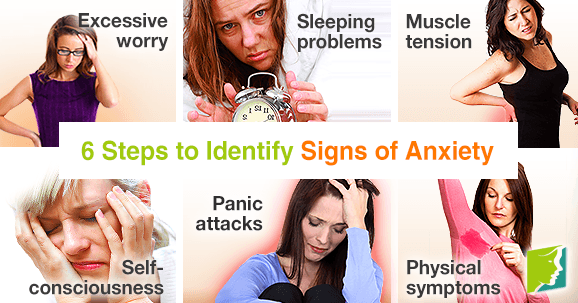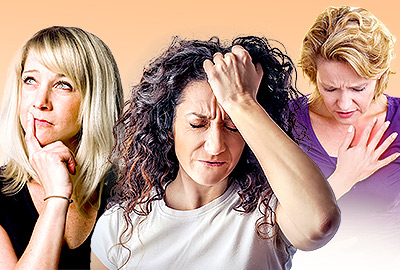Experiencing occasional anxiety is a normal part of life. However, anxiety disorders are psychological, and are characterized by the exaggerated and frequent feeling of worry, tension, and nervousness, even when there is nothing to provoke these feelings. Types of anxiety disorders include generalized anxiety disorder, panic disorder, phobias, and many others. There are several ways to identify signs of anxiety, and being self-aware is key to determining the problem. Keep reading to learn more.
Anxiety Causes
Causes of anxiety can range from hormone fluctuations to stress, emotional trauma, insufficient exercise, and poor diet. Things like genetics, medication side effects, and drug abuse withdrawal can also trigger anxiety disorders.
Signs of Anxiety
Here are some signs of anxiety to be alert for:
Excessive worry
This is a difficult sign to identify because everyday worries are normal. Excessive worries however, occur far more than usual and are typically unprovoked and irrational.
Sleeping problems
Insomnia or having trouble falling asleep and staying asleep, is a common sign of anxiety. Experiencing insomnia the night before a big interview or speech is common, but if it occurs frequently, you may have an anxiety disorder.
Muscle tension
Experiencing constant muscle tension, like clenched jaws or balled up fists, is another typical sign of anxiety.
Self-consciousness
Feeling like all eyes are on you, blushing, trembling, and experiencing constant self-doubt are all signs of anxiety that are typically irrational.
Panic attacks
A panic attack is usually characterized by gripping fear, sudden breathing problems, and numb hands, and typically lasts several minutes.
Physical symptoms
There are many physical symptoms that commonly accompany anxiety disorders, like nausea, sweating, dizziness, fatigue, stomach-aches, cramping, hyperventilating, and increased heart rate.
Managing Anxiety
Certain adjustments in your daily life can go a long way in reducing symptoms and signs of anxiety.
Sleep
Getting sufficient sleep every night is vital to feeling your best throughout the day. Being well-rested can help prevent various anxiety symptoms, as well as headaches and fatigue.
Relax
Taking time every day for yourself is crucial to feeling good and treating anxiety. Taking a bath after a long day, reading, or meditating are all effective ways of relaxing the body and mind.
Talk
Talking to close friends and family can help you relax after a stressful time. Try to make time to see or talk to friends and family throughout the week. Having a solid support system is key to ensuring good mental health.
Exercise
The key to reducing stress and releasing “feel-good” neurotransmitters, like serotonin, is to exercise regularly. This means at least 30 minutes of aerobic activity daily, five times a week. Walking, cycling, and swimming are all good forms of low-impact workouts that can help ease anxiety.
Eat healthy
Making simple dietary changes can be beneficial in feeling your best. Including protein, fiber, fatty acids, and fruits and vegetables into meals is ideal for optimum mental and physical performance and boosting energy.
Avoid caffeine
Drinking excessive amounts of caffeine can cause jitteriness, shakes, and nervousness. Try to avoid caffeine, or at least gradually cut down to one cup of coffee or tea per day.
Anxiety affects around 40 million Americans on average. Several steps to identify signs include being self-aware and taking notice of symptoms like excessive worry and trouble sleeping. There are several ways to help ease anxiety symptoms, and it is important to try out different treatment options to see which works best for you.
Sources
- National Health Service UK. (2014). Generalised anxiety disorder - symptoms. Retrieved September 1, 2014, from http://www.nhs.uk/Conditions/Anxiety/Pages/Symptoms.aspx
- National Institutes of Mental Health. (n.d.). Anxiety Disorders. Retrieved September 1, 2014, from http://www.nimh.nih.gov/health/publications/anxiety-disorders/index.shtml
- Office on Women's Health. (2012). Anxiety disorders fact sheet. Retrieved September 1, 2014, from http://www.womenshealth.gov/publications/our-publications/fact-sheet/anxiety-disorders.html




